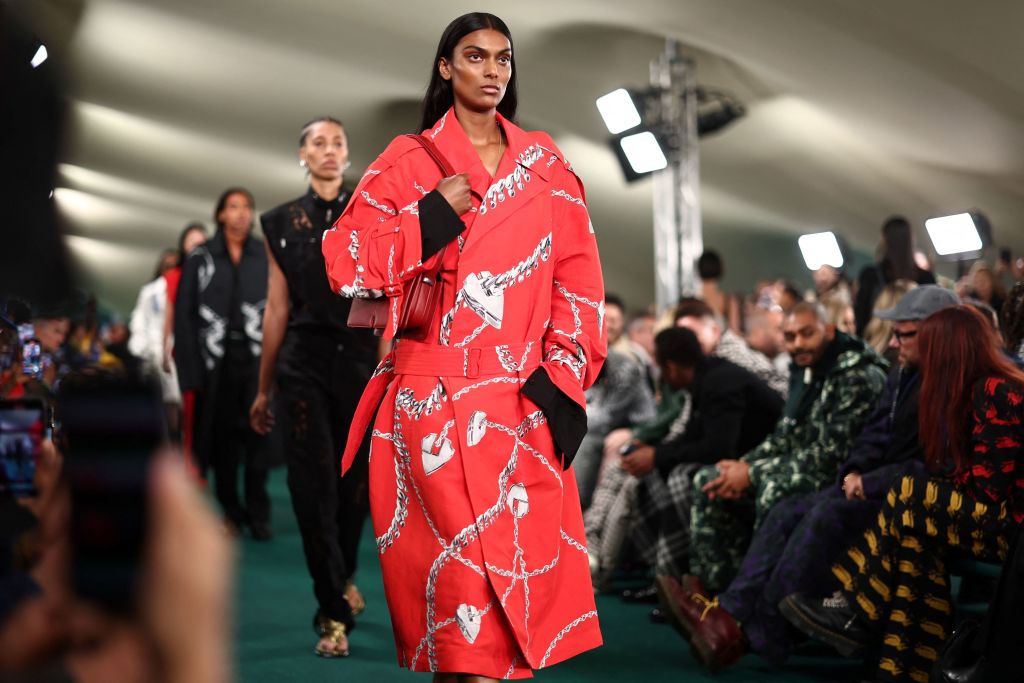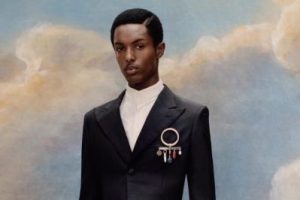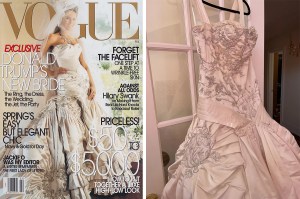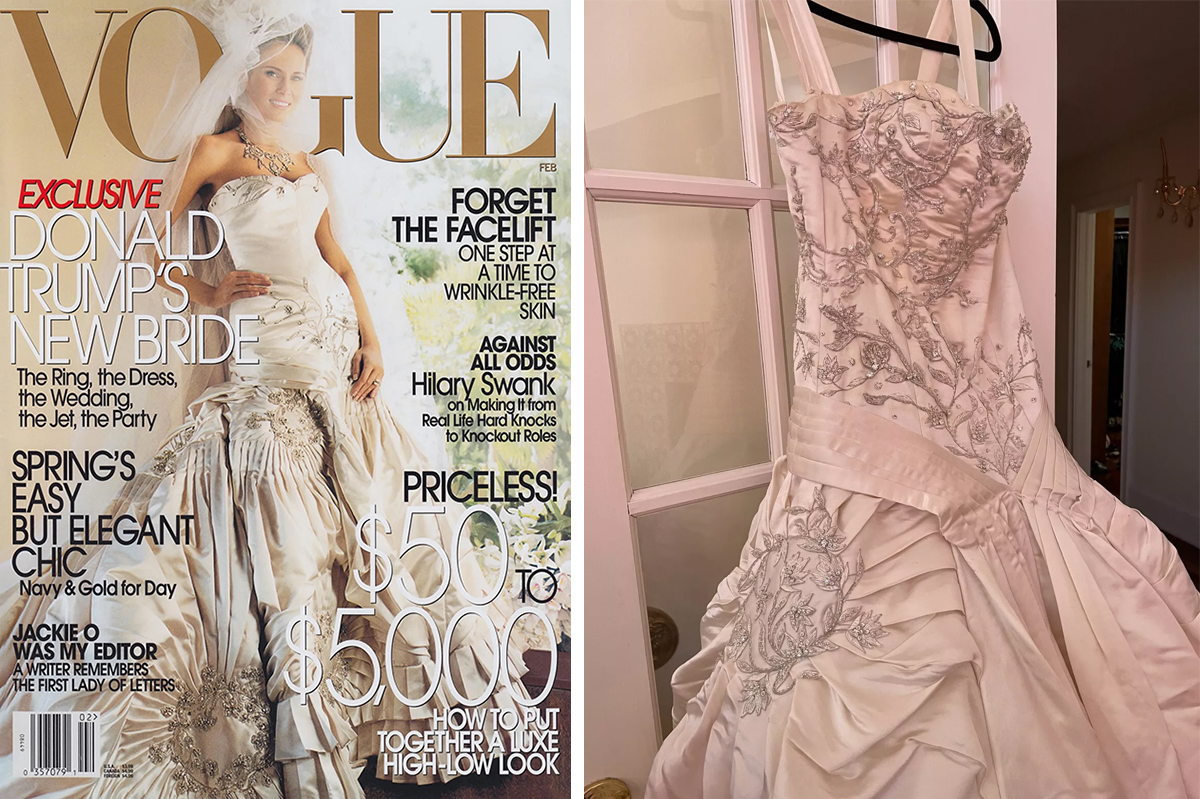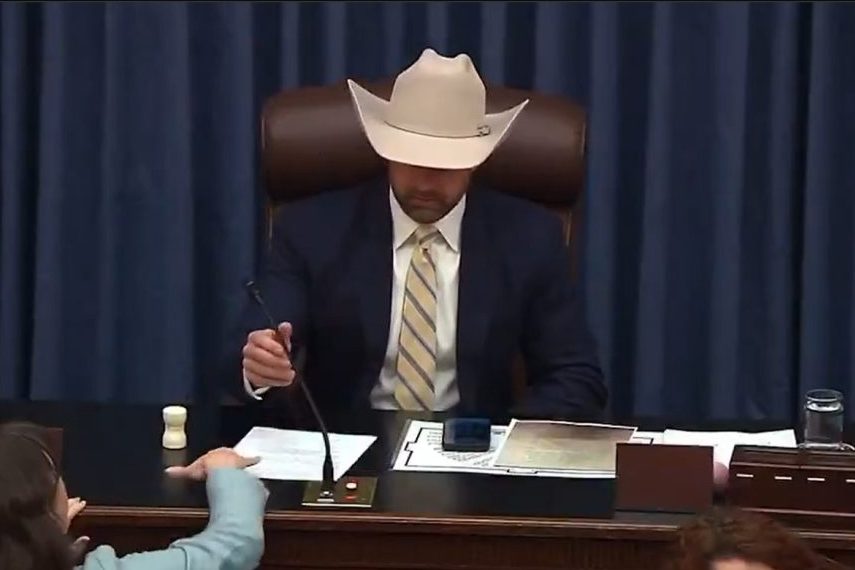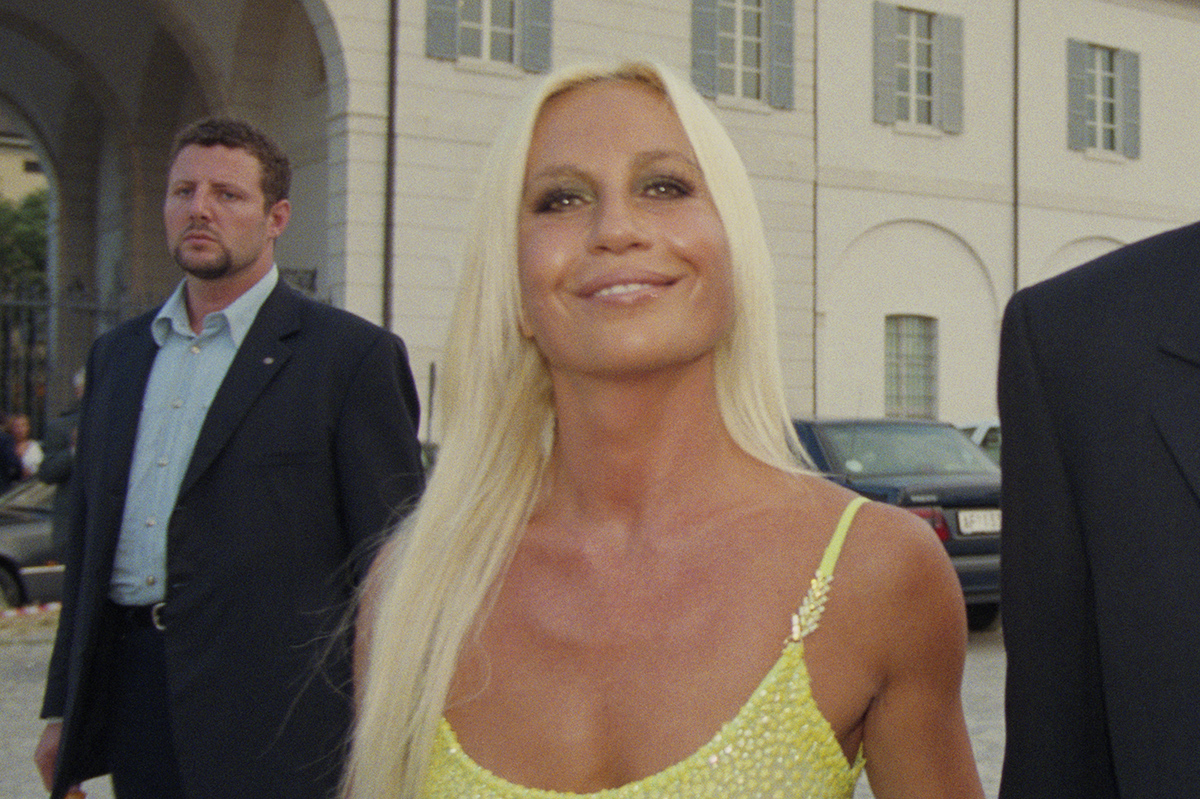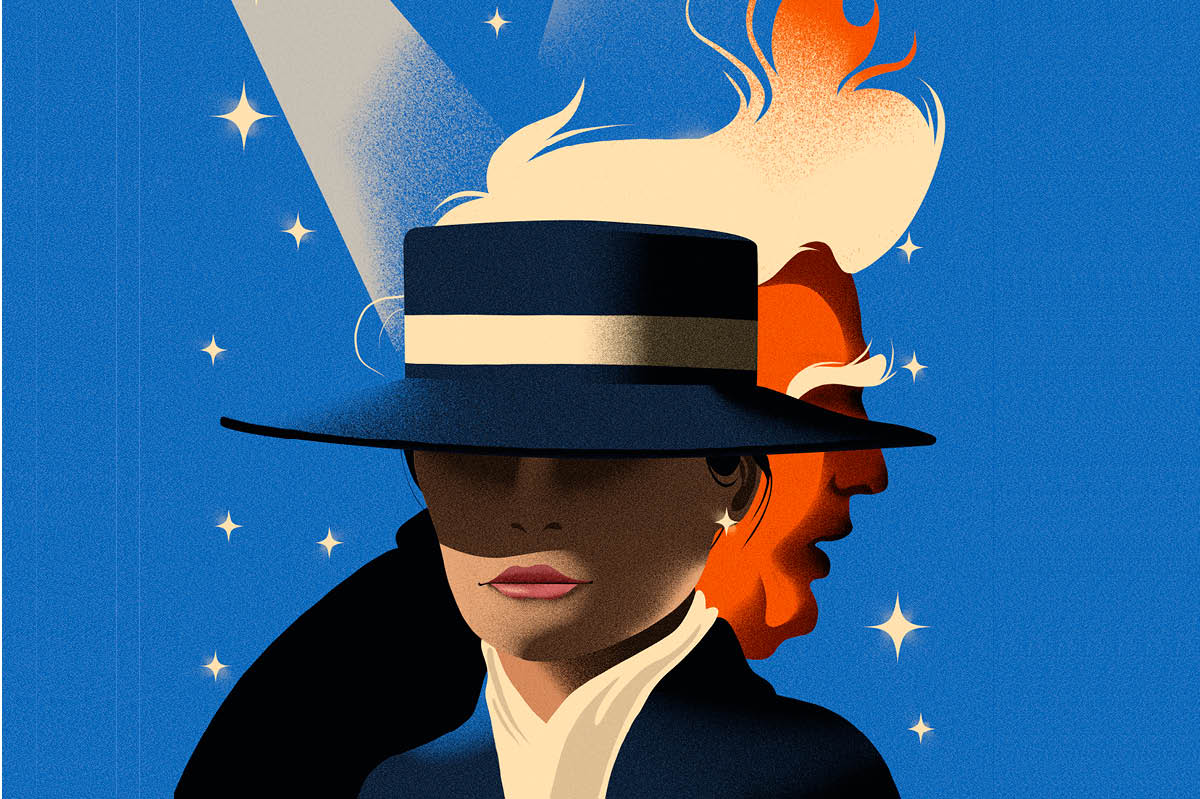It was raining on and off, but that was only fitting, as guests waited for the Summer 2024 show of Burberry, a brand that came to prominence in 1879 through its gabardine water-resistant coats. The Highbury Fields show was in a large tent, emblazoned with its signature check, with a green looping runway carpet inside and various celebrities in attendance. As per the fashion usual, the show was running late. At least it wasn’t pouring.
Burberry isn’t just the greatest British luxury house; it’s one of the most compelling fashion houses in the world. No brand has such a rich history of contradictory iconography and speaks so directly to the culture of its home nation.
Burberry is classy, trashy, flashy, reserved, functional and oh so unnecessary all at once. Burberry isn’t just a British brand; it’s Britain cut in cloth.
And yet, as I watched this week’s show — the second by savant creative director Daniel Lee, who recently turned around Bottega Veneta — I was also struck that no modern designer has managed to carry that baton; to live up to the legacy of the brand and do something interesting with it. Perhaps like its home country, Burberry’s greatest years seem locked firmly in the past.
Thomas Burberry was a twenty-one-year-old son of farmers when he founded his namesake brand, “Burberrys.” He’d worked as a draper’s apprentice and valued clothes for both their quality and functionality. Other brands found durability in thick fabric, but that made their coats too heavy for hunting and riding and working in. For Thomas, a coat had to be light and flowing as well as water resistant; and so he invented gabardine, a fabric made from fibers that were waterproofed before they were tightly woven. It was light and breathable but still kept you dry. Today, Burberry “luxury” status is a function of its prices and current market position, but it all comes back to this fabric, and Thomas Burberry’s attention to functional innovation and quality garments.
You can tell a lot about a brand from its signature product. Gucci has its gold buckle belts. Louboutin is synonymous with its red-bottom heels. But Burberry’s is a coat made for British officers in World War 1, who needed something shorter and lighter, so they could move through trench mud without getting stuck. Its shoulder straps were for attaching insignia; its cuffed raglan sleeves meant you could use binoculars in the rain without the water running down your arms and soaking your chest; and the midriff belt was handy for holding sabers, maps and tools. When these officers returned from war, these “trench coats” entered civilian life too, and served just as well in rainy London streets as they did in wartime filth.
Ironically, it wasn’t a Brit who popularized the brands motif — the oft-faked Burberry check — but rather, a Parisian employee of theirs, Jacqueline Dillemman. In 1967, she wrapped luggage and made an umbrella cover from the lining of the company’s famous coats, a detail that had been included since the interwar years to add some flourish to their garments, while remaining modest. The suitcase and “brolly” were just meant as store dressing to pull customers in and impress the visiting British ambassador, Sir Patrick Reilly, but customer demand was so overwhelming that executives listened, releasing scarves, hats, umbrellas and bags showing off this once discreet, hidden pattern.
Had the company still been owned by the Burberrys, perhaps they would have resisted, or limited the rollout, finding it too gauche. But they’d sold out of the company by that point. Burberry was on the stock exchange, and a public company can’t turn down paying customers.
The check and the trench define the best of Burberry — from those original trench coats, to their impeccable scarves, to the 2000 “wedding campaign,” in which Kate Moss wore a wedding veil and check bikini. Over time, however, these signatures began to hold the brand hostage, and their changes meaning was warping Burberry.
It wasn’t Humphrey Bogart wearing trench coats anymore, it was school shooters and flashers, and the check wasn’t a subtle lining for the English gentleman, but rather, the calling card of English football hooligans, who wore knockoff Burberry bucket hats as they drunkenly fought. Some pubs banned the pattern, and though the hooligans have since left Burberry alone, the pattern has now become a way to quickly, tastelessly signal your wealth.
After receiving his first big paycheck last year, the Mexican pop singer Peso Pluma bought a full outfit in Burberry, which he posted to Instagram. A few months later, walking through Harrods, I passed a girl who could be no older than twelve, clad shoes to beanie — socks, dress, puffer jacket and handbag — in the brand’s signature plaid. I wondered what Thomas Burberry would have thought of the sight.
Had Burberry’s corporate owners wanted to make it the British Hermes, the pathway from this would be quite simple. Reduce the range of offerings, up garment quality and pricing to put it at the top of luxury clothing, and reserve showing the check for high-margin, best-selling accessories, like scarves and handkerchiefs. That would have respected the company’s legacy and been highly profitable — Hermes still has the best margins in fashion — but Burberry’s corporate stewards have always wanted to take on Gucci and Louis Vuitton and Prada.
They want Burberry to be hot; to be at the forefront of fashion; to be flashy and worn by celebs; and to do so, their designers needed to innovate and put some distance between the brand and its signature items. But without the check, without the trenches, and with a focus on style over quality, what even is the point of Burberry?
The creative leadership of Christopher Bailey from 2001 to 2018 dropped the average customer age by about thirty years and revolutionized the business of the brand, but never had a lasting style, and never answered that question. His translucent, colorful anoraks were gorgeous but had no cultural impact; his use of equestrian influences in collections like Fall 2011 was similarly transient; and his slouchy, streetwear-inspired tailoring did little to help the brand’s “chav” associations and was better incorporated by his competitors. It truly was bold not to include any uses of the check in his debut Spring 2002 collection, but it was also a pretty forgettable collection, and doesn’t feel like Burberry. Though the check had long returned, the same is true of his final, Fall 2018 collection, which just feels garish and without identity.
His 2018 replacement, Riccardo Tisci, reembraced the classic Burberry look, bringing back the tan and emphasizing the classic patterns, but made it bold, chic and modern. In some ways, it was a success; some of his runway collection was the best the brand has ever looked. To take just one: the leather skirts, plaid jackets, silk shirts and reinterpreted trenches of the Spring 2019 collection were modern and innovative, but also felt like a dream of what beautiful people would wear stepping off a transatlantic flight. It was Pan Am and Soho and champagne flutes and rooftop cocktail parties and walks in autumn parks, all wrapped up in one, and it was glorious.
But the tragedy of Tisci’s tenure is that nobody remembers this stuff. This elegant side of his work never got as much attention. It was overshadowed by the plaid-lathered wallets, backpacks and shirts, and the celebrity looks on magazine covers. This all sold initially and was what the brand had wanted, but ultimately felt tired very quickly, and the market for this moved on to Gucci and Balenciaga.
Last year’s appointment of Daniel Lee as director held the promise of revitalization. He changed Burberry’s text from Tisci’s minimalist block font to a quaint serif. He brought back the classic, original Prorsum knight logo, soon to go on scarves and advertisements. And just as he gave Bottega a signature color in their green, he introduced a new Burberry blue — and what a lovely shade it is.
It was going to be classy. It was going to be British. It was going to be new. But it was going to be Burberry. Or at least that’s what the marketing promised. But his debut Fall-Winter 2023 collection was a flat assortment of interesting ideas that needed more development.
You could sum up the clothes as “Burberry with the zest of Vivienne Westwood,” as Lee had thrown out the classic straight lines and tan, making new check patterns in bold greens, purples, yellows and reds, with wavy lines and blurry edges rendered on grunge-inspired cropped knitwear with long sleeves. There were scarves too, but they shared these new bold tones, and its main accessories were large furry hats, wrapped up blankets and fluffy hot water bottles.
At least it was different and interesting; and the thought was that, in his sophomore collection, Lee would take these starting ideas and develop them into a coherent, fleshed-out, compelling new face for Burberry.
But that didn’t happen.
Instead, with this week’s show, Lee seemingly discarded everything and moved onto a new half-baked set of ideas, this time playing with the classical elements of trench coats. There were some examples where this worked — namely, a black silk shirt with trench shoulders, a drapey white wide-shouldered coat with chain and buckle graphics and two military jackets in ruched chiffon — but the rest was listless, inconsistent, confused nothingnesses. There weren’t even any interesting accessories, typically a focal point for Burberry’s design and business.
The show ended with a shirtless model walking down the runway wearing blue trousers and a black belt, emblazoned with a large Prorsum knight buckle. I guess the idea was that this would be sexy, or something. But there could be no better symbol for how far Burberry has drifted — a brand started through its quality raincoats — than a shirtless model walking down a soft indoors runway.
At least it wasn’t raining.



